The 18 endangered French monuments to be saved by new lottery
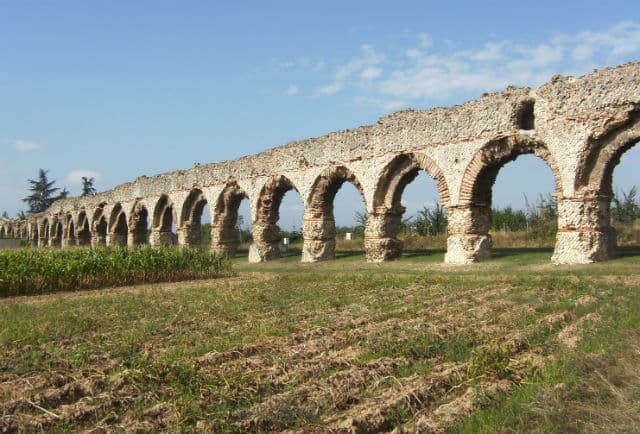
French President Emmanuel Macron launched on Thursday a new heritage lottery (loto du patrimoine) to pay for the restoration of France's crumbling monuments. Here are the 18 buildings at top of the list.
The government hopes to rake in up to €20 million with this initiative and will set up a fund for the buildings which are in most need of repair.
These are the 18 monuments at the top of the list.
Ancien Hôtel-Dieu, Château-Thierry (Aisne)
This hospice northeast of Paris was built in 1304 and was run by nuns until the 1960s. The government wants to turn the building into a museum of hospital history which will cost an estimated 7.5 million euros.
READ ALSO:
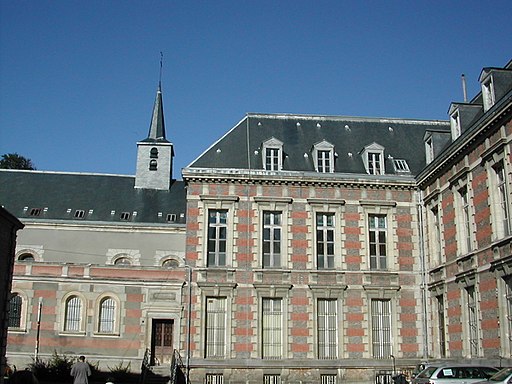 Ancien Hôtel-Dieu Photo: Johann "nojhan" Dréo/Wikicommons
Château de Carneville, Carneville (Manche)
This listed 18th century château on the coast on the northwestern tip of France with elaborate facades and elegant French gardens has been privately owned since 2012.
Ancien Hôtel-Dieu Photo: Johann "nojhan" Dréo/Wikicommons
Château de Carneville, Carneville (Manche)
This listed 18th century château on the coast on the northwestern tip of France with elaborate facades and elegant French gardens has been privately owned since 2012.
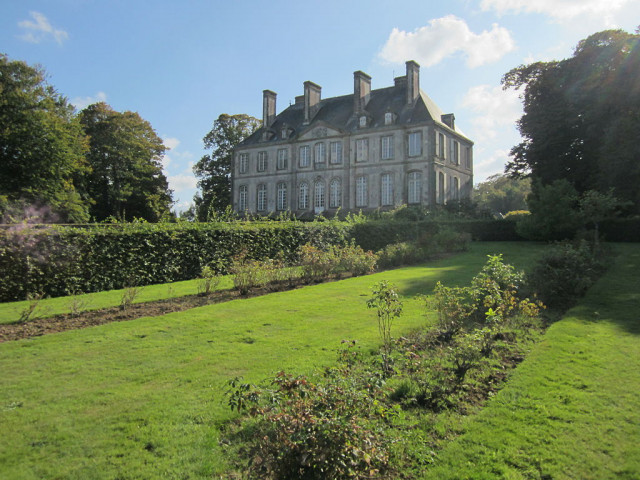 Château de Carneville Photo: Xfigpower_Wikicommons
Théâtre des Bleus de Bar, Bar-le-Duc (Meuse)
Bringing this early 20th century 'Italian-style theatre' in eastern France back to its former glory will cost up to 1.6 millions euros. For the past three years, locals have been actively involved in getting the restoration project off the ground.
Villa Viardot, Bougival (Yvelines)
The Russian writer Ivan Tourgueniev bought this 19th century villa not far from Paris in 1874. An opera singer lived it it for a while, where she entertained the famous writers and composers of her time. Plans to turn the building along with two other ones close by into a European centre of music are being set up.
Château de Carneville Photo: Xfigpower_Wikicommons
Théâtre des Bleus de Bar, Bar-le-Duc (Meuse)
Bringing this early 20th century 'Italian-style theatre' in eastern France back to its former glory will cost up to 1.6 millions euros. For the past three years, locals have been actively involved in getting the restoration project off the ground.
Villa Viardot, Bougival (Yvelines)
The Russian writer Ivan Tourgueniev bought this 19th century villa not far from Paris in 1874. An opera singer lived it it for a while, where she entertained the famous writers and composers of her time. Plans to turn the building along with two other ones close by into a European centre of music are being set up.
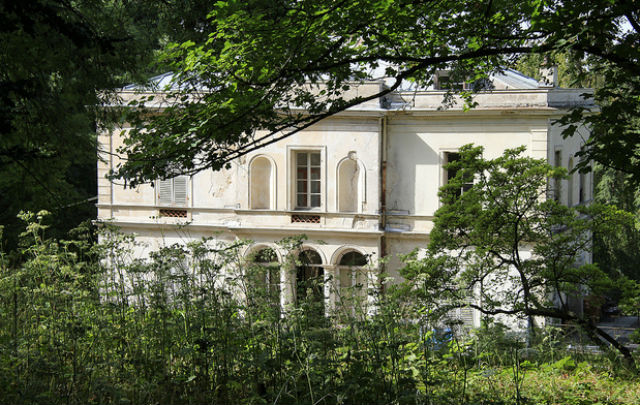 Villa Viardot Photo: Renaud Camus/Flickr
Château de Bussy-Rabutin, Bussy-le-Grand (Côte-d’Or)
In the 17th century, this listed Renaissance-style château belonged to a count and critic of Louis XIV, who decorated his home with over 500 portraits mocking the court. The building was bought by the state in the 1920s.
Villa Viardot Photo: Renaud Camus/Flickr
Château de Bussy-Rabutin, Bussy-le-Grand (Côte-d’Or)
In the 17th century, this listed Renaissance-style château belonged to a count and critic of Louis XIV, who decorated his home with over 500 portraits mocking the court. The building was bought by the state in the 1920s.
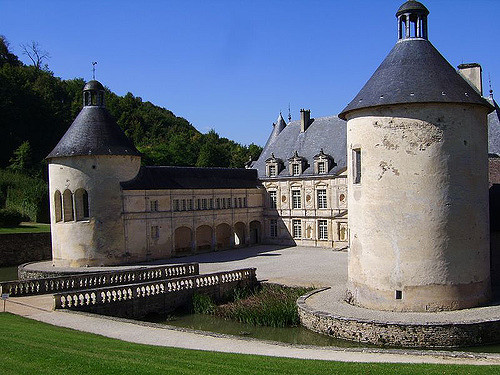 Château de Bussy-Rabutin Photo: peuplier/Flickr
Rotonde ferroviaire de Montabon (Sarthe)
This railway roundhouse, a building which was used to store steam trains, was built in 1891. It is one of the only buildings of its kind to remain in its original state and has been listed since 2010.
Château de Bussy-Rabutin Photo: peuplier/Flickr
Rotonde ferroviaire de Montabon (Sarthe)
This railway roundhouse, a building which was used to store steam trains, was built in 1891. It is one of the only buildings of its kind to remain in its original state and has been listed since 2010.
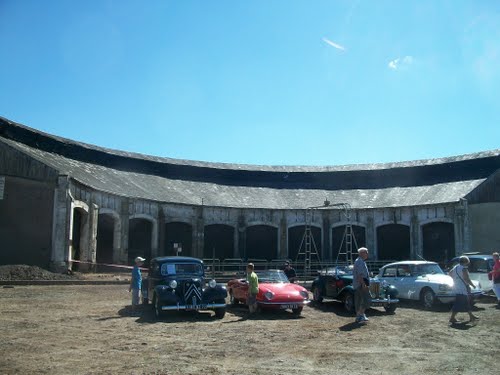 Rotonde de Montabon Photo: E24000/Wikicommons
Fort-Cigogne, Fouesnant (Finistère)
The military fort on a small island in Brittany was built in 1755 to fend off fleets from England and Holland but was never completed. Listed since 2013, it is currently used by members of the local sailing club.
Rotonde de Montabon Photo: E24000/Wikicommons
Fort-Cigogne, Fouesnant (Finistère)
The military fort on a small island in Brittany was built in 1755 to fend off fleets from England and Holland but was never completed. Listed since 2013, it is currently used by members of the local sailing club.
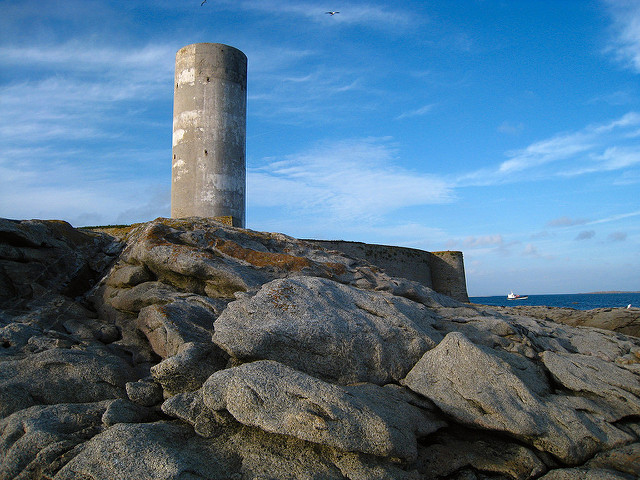 Fort-Cigogne. Photo: Matthieu FAURE/Flickr
Eglise Notre-Dame, La Celle-Guénand (Indre-et-Loire)
This Romanesque church has a nave which dates back to the 12th century and is famous for its remarkable facade and central door with two blind arcades.
Fort-Cigogne. Photo: Matthieu FAURE/Flickr
Eglise Notre-Dame, La Celle-Guénand (Indre-et-Loire)
This Romanesque church has a nave which dates back to the 12th century and is famous for its remarkable facade and central door with two blind arcades.
⛪️ L'église Notre Dame de la Celle-Guénand, édifiée au XIIe s., est un monument emblématique de l'art roman tourangeau. Grâces aux subventions du loto du #patrimoine pour lequel elle a été sélectionnée par @bernstephane, le portail central et la toiture pourront être restaurés. pic.twitter.com/5UWM9e3lF7
— J'⚜️ le Val de Loire ! (@SoValDeLoire) May 29, 2018
Maison de Pierre Loti, Rochefort (Charente-Maritime)
Pierre Loti was a French writer who died in the 1920s. HIs house is full of the treasures he bought back from his travels.
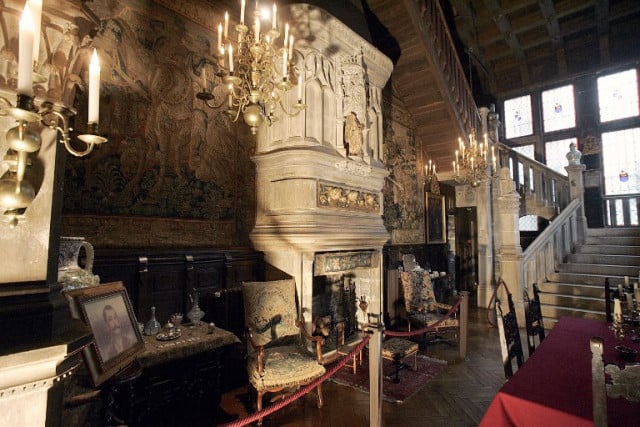 Maison de Pierre Loti. Photo: AFP
Aqueduc romain du Gier et pont-siphon de Beaunant, Chaponost et Sainte-Foy-lès-Lyon (Rhône)
The Roman aqueduct used to carry water along 86 kilometers. Some of it it still well preserved, such as the section with 72 arches close to the town of Lyon.
Maison de Pierre Loti. Photo: AFP
Aqueduc romain du Gier et pont-siphon de Beaunant, Chaponost et Sainte-Foy-lès-Lyon (Rhône)
The Roman aqueduct used to carry water along 86 kilometers. Some of it it still well preserved, such as the section with 72 arches close to the town of Lyon.
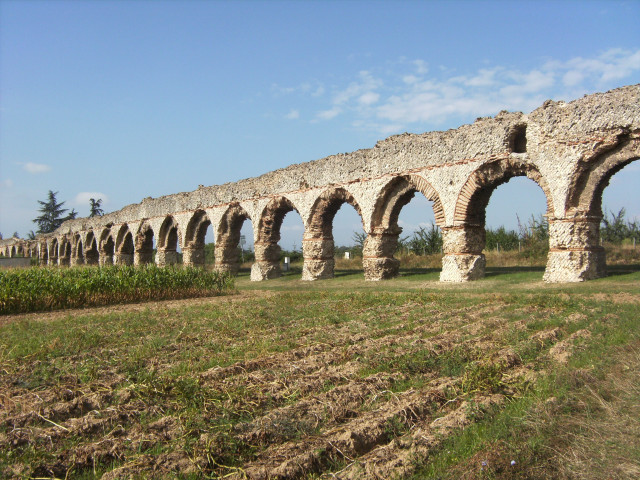 Aqueduc romain du Gier Photo: Jmh2o/Wikicommons
Hôtel de Polignac, Condom (Gers)
This listed building on the ramparts of the town of Condom was built just before the French revolution. It now houses a primary school.
Aqueduc romain du Gier Photo: Jmh2o/Wikicommons
Hôtel de Polignac, Condom (Gers)
This listed building on the ramparts of the town of Condom was built just before the French revolution. It now houses a primary school.
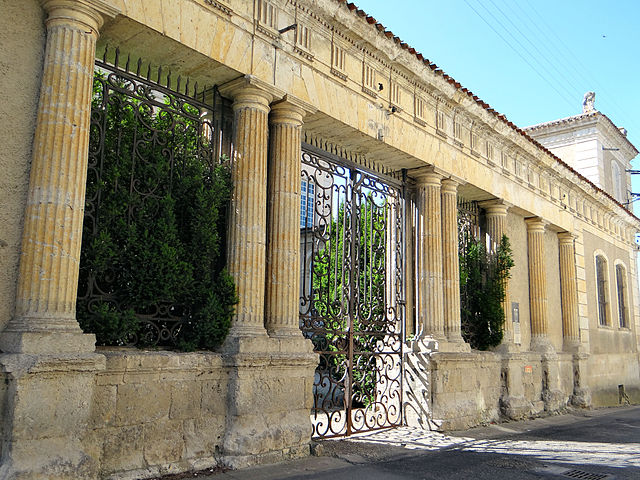 Hôtel de Polignac, Condom (Gers). Photo: MOSSOT/Wikicommons
Pont d’Ondres, Thorame-Haute (Alpes-de-Haute-Provence)
This 17th century bridge is 41 metres long. It crosses over the impressive Verdon gorges.
Hôtel de Polignac, Condom (Gers). Photo: MOSSOT/Wikicommons
Pont d’Ondres, Thorame-Haute (Alpes-de-Haute-Provence)
This 17th century bridge is 41 metres long. It crosses over the impressive Verdon gorges.
.jpg) Pont d’Ondres Photo: AFP
Couvent Saint-François, Pino (Haute-Corse)
This former Franciscan monastery was built in 1486 and is now empty. Some restoration work began in 2008.
Pont d’Ondres Photo: AFP
Couvent Saint-François, Pino (Haute-Corse)
This former Franciscan monastery was built in 1486 and is now empty. Some restoration work began in 2008.
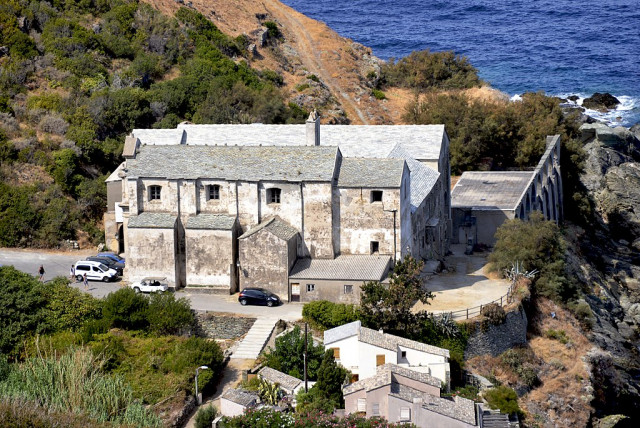 Couvent Saint-François Photo: Pierre Bona/Wikicommons
Maison d’Aimé Césaire, Fort-de-France (Martinique)
The 1930s house of the famous poet and politician in Martinique Aimé Césaire is now owned by the Césaire institute. It wants to turn the building into a museum.
Couvent Saint-François Photo: Pierre Bona/Wikicommons
Maison d’Aimé Césaire, Fort-de-France (Martinique)
The 1930s house of the famous poet and politician in Martinique Aimé Césaire is now owned by the Césaire institute. It wants to turn the building into a museum.
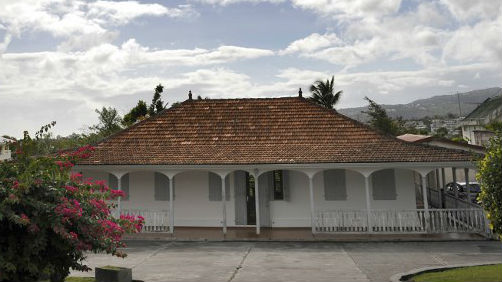 Photo: AFP
Habitation Bisdary, Gourbeyre (Guadeloupe)
This colonial-style house on a sugar plantation in Guadeloupe was built by Jesuits in the 18th century. It has been severely damaged by storms and fires over the years.
Maison du receveur des douanes, Saint-Laurent-du-Maroni (Guyane)
This house made of wood and brick used to house French officials in French Guiana. It is now listed.
Photo: AFP
Habitation Bisdary, Gourbeyre (Guadeloupe)
This colonial-style house on a sugar plantation in Guadeloupe was built by Jesuits in the 18th century. It has been severely damaged by storms and fires over the years.
Maison du receveur des douanes, Saint-Laurent-du-Maroni (Guyane)
This house made of wood and brick used to house French officials in French Guiana. It is now listed.
#Guyane et #Amazonie est sorti de presse ! https://t.co/9CNUWhu66T
— Isa Guillard (@Isadeguyane) May 31, 2018
Maison Rouge, Saint-Louis (La Réunion)
Built in the 18th century on a coffee plantation on the Reunion Island, this building now houses an art museum.
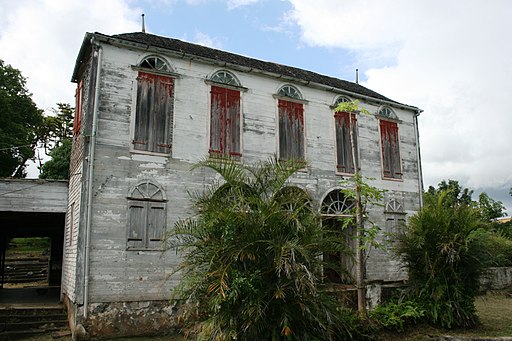 Maison Rouge Photo: Thierry Caro/Wikicommons
L’usine sucrière de Soulou, M’Tsangamouji (Mayotte)
This former sugar factory in Mayotte still contains many of the original machines from the 19th century.
Maison Rouge Photo: Thierry Caro/Wikicommons
L’usine sucrière de Soulou, M’Tsangamouji (Mayotte)
This former sugar factory in Mayotte still contains many of the original machines from the 19th century.
Comments
See Also
The government hopes to rake in up to €20 million with this initiative and will set up a fund for the buildings which are in most need of repair.
These are the 18 monuments at the top of the list.
Ancien Hôtel-Dieu, Château-Thierry (Aisne)
This hospice northeast of Paris was built in 1304 and was run by nuns until the 1960s. The government wants to turn the building into a museum of hospital history which will cost an estimated 7.5 million euros.
READ ALSO:

Ancien Hôtel-Dieu Photo: Johann "nojhan" Dréo/Wikicommons
Château de Carneville, Carneville (Manche)
This listed 18th century château on the coast on the northwestern tip of France with elaborate facades and elegant French gardens has been privately owned since 2012.
Château de Carneville Photo: Xfigpower_Wikicommons
Théâtre des Bleus de Bar, Bar-le-Duc (Meuse)
Bringing this early 20th century 'Italian-style theatre' in eastern France back to its former glory will cost up to 1.6 millions euros. For the past three years, locals have been actively involved in getting the restoration project off the ground.
Villa Viardot, Bougival (Yvelines)
The Russian writer Ivan Tourgueniev bought this 19th century villa not far from Paris in 1874. An opera singer lived it it for a while, where she entertained the famous writers and composers of her time. Plans to turn the building along with two other ones close by into a European centre of music are being set up.

Villa Viardot Photo: Renaud Camus/Flickr
Château de Bussy-Rabutin, Bussy-le-Grand (Côte-d’Or)
In the 17th century, this listed Renaissance-style château belonged to a count and critic of Louis XIV, who decorated his home with over 500 portraits mocking the court. The building was bought by the state in the 1920s.

Château de Bussy-Rabutin Photo: peuplier/Flickr
Rotonde ferroviaire de Montabon (Sarthe)
This railway roundhouse, a building which was used to store steam trains, was built in 1891. It is one of the only buildings of its kind to remain in its original state and has been listed since 2010.

Rotonde de Montabon Photo: E24000/Wikicommons
Fort-Cigogne, Fouesnant (Finistère)
The military fort on a small island in Brittany was built in 1755 to fend off fleets from England and Holland but was never completed. Listed since 2013, it is currently used by members of the local sailing club.

Fort-Cigogne. Photo: Matthieu FAURE/Flickr
Eglise Notre-Dame, La Celle-Guénand (Indre-et-Loire)
This Romanesque church has a nave which dates back to the 12th century and is famous for its remarkable facade and central door with two blind arcades.
⛪️ L'église Notre Dame de la Celle-Guénand, édifiée au XIIe s., est un monument emblématique de l'art roman tourangeau. Grâces aux subventions du loto du #patrimoine pour lequel elle a été sélectionnée par @bernstephane, le portail central et la toiture pourront être restaurés. pic.twitter.com/5UWM9e3lF7
— J'⚜️ le Val de Loire ! (@SoValDeLoire) May 29, 2018
Maison de Pierre Loti, Rochefort (Charente-Maritime)
Pierre Loti was a French writer who died in the 1920s. HIs house is full of the treasures he bought back from his travels.

Maison de Pierre Loti. Photo: AFP
Aqueduc romain du Gier et pont-siphon de Beaunant, Chaponost et Sainte-Foy-lès-Lyon (Rhône)
The Roman aqueduct used to carry water along 86 kilometers. Some of it it still well preserved, such as the section with 72 arches close to the town of Lyon.
Aqueduc romain du Gier Photo: Jmh2o/Wikicommons
Hôtel de Polignac, Condom (Gers)
This listed building on the ramparts of the town of Condom was built just before the French revolution. It now houses a primary school.
Hôtel de Polignac, Condom (Gers). Photo: MOSSOT/Wikicommons
Pont d’Ondres, Thorame-Haute (Alpes-de-Haute-Provence)
This 17th century bridge is 41 metres long. It crosses over the impressive Verdon gorges.
.jpg)
Pont d’Ondres Photo: AFP
Couvent Saint-François, Pino (Haute-Corse)
This former Franciscan monastery was built in 1486 and is now empty. Some restoration work began in 2008.

Couvent Saint-François Photo: Pierre Bona/Wikicommons
Maison d’Aimé Césaire, Fort-de-France (Martinique)
The 1930s house of the famous poet and politician in Martinique Aimé Césaire is now owned by the Césaire institute. It wants to turn the building into a museum.

Photo: AFP
Habitation Bisdary, Gourbeyre (Guadeloupe)
This colonial-style house on a sugar plantation in Guadeloupe was built by Jesuits in the 18th century. It has been severely damaged by storms and fires over the years.
Maison du receveur des douanes, Saint-Laurent-du-Maroni (Guyane)
This house made of wood and brick used to house French officials in French Guiana. It is now listed.
#Guyane et #Amazonie est sorti de presse ! https://t.co/9CNUWhu66T
— Isa Guillard (@Isadeguyane) May 31, 2018
Maison Rouge, Saint-Louis (La Réunion)
Built in the 18th century on a coffee plantation on the Reunion Island, this building now houses an art museum.
Maison Rouge Photo: Thierry Caro/Wikicommons
L’usine sucrière de Soulou, M’Tsangamouji (Mayotte)
This former sugar factory in Mayotte still contains many of the original machines from the 19th century.
Join the conversation in our comments section below. Share your own views and experience and if you have a question or suggestion for our journalists then email us at [email protected].
Please keep comments civil, constructive and on topic – and make sure to read our terms of use before getting involved.
Please log in here to leave a comment.